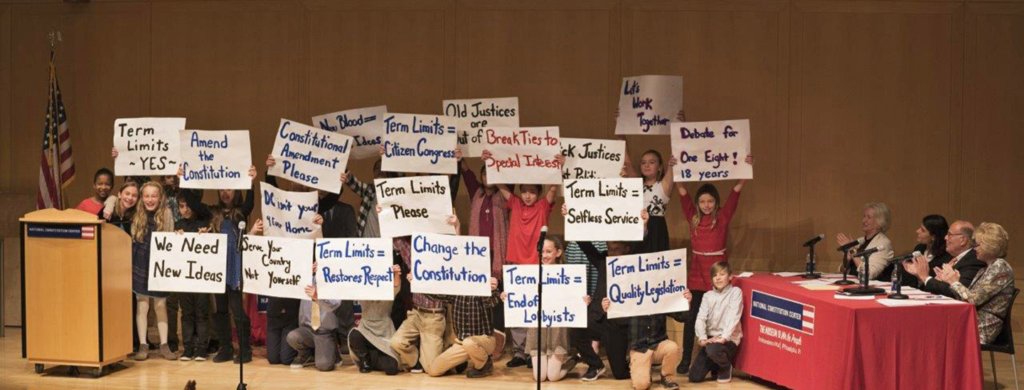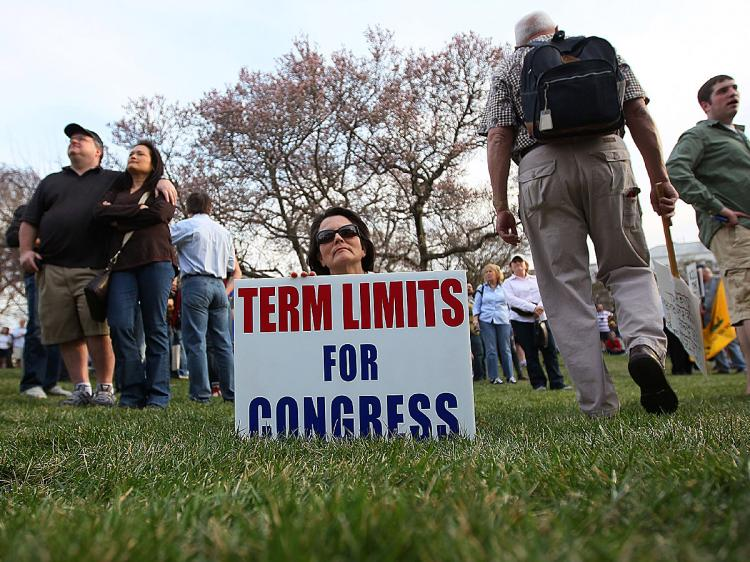Term limits for Congress and the presidency have long been a source of debate in American politics. While the presidency has been limited to two terms since the 1950s, Congress has no such restriction, allowing members to serve for decades if they continue to win elections. Supporters argue that term limits prevent corruption, promote accountability, and bring fresh voices into government. Opponents counter that limiting terms undermines voter choice, reduces experience, and shifts power to unelected officials.
This debate goes to the heart of how democracy should function. Should elected officials be allowed to serve as long as the people support them, or should there be strict limits to prevent entrenchment and abuse of power? Understanding the arguments on both sides is crucial as the United States continues to grapple with questions of fairness, representation, and effective governance.
A Historical Perspective on Term Limits
The Founding Fathers did not establish term limits for either Congress or the presidency in the original U.S. Constitution. Their focus was on balancing power among the three branches of government, with checks and balances ensuring that no individual or institution could dominate.
Presidential term limits were introduced only after Franklin D. Roosevelt was elected four times, serving from 1933 until his death in 1945. In response, the 22nd Amendment was ratified in 1951, restricting presidents to two terms. This change reflected fears of excessive executive power and the desire to prevent the rise of a permanent political dynasty.
Congress, however, remained exempt from term limits. Senators and representatives can serve indefinitely, as long as they are reelected. Over time, this has allowed some lawmakers to remain in office for 30, 40, or even 50 years. This raises ongoing questions about whether career politicians benefit or harm democracy.

Arguments for Term Limits in Congress
Supporters of term limits for Congress believe they would strengthen democracy and reduce corruption. Their arguments often fall into several key areas:
1. Preventing Career Politicians
Without term limits, members of Congress often spend decades in office, building power through seniority. Critics argue this creates a class of career politicians more concerned with staying in office than serving the public. Term limits, they argue, would prevent politics from becoming a lifetime career.
2. Encouraging Fresh Perspectives
New leaders bring fresh ideas and energy to government. Supporters argue that turnover would allow Congress to better reflect the changing values of the population, especially younger generations and underrepresented groups.
3. Reducing Corruption and Influence of Special Interests
Long-serving lawmakers often build strong ties with lobbyists and donors, making them more vulnerable to corruption. Term limits could weaken the influence of special interests by reducing the time any one politician spends in office.
4. Restoring Public Trust
Americans consistently express frustration with Congress, citing gridlock and self-interest. Advocates believe term limits could restore trust by making government more accountable and less dominated by entrenched elites.
Arguments Against Term Limits in Congress
Opponents of term limits see them as unnecessary and even harmful to democracy. They argue that the ballot box already provides the ultimate check on power.
1. Voter Choice Matters Most
If voters want to reelect the same representative multiple times, that decision should be respected. Opponents argue that term limits override the will of the people by forcing effective and popular lawmakers out of office.
2. Experience Brings Value
Legislation is complex, and experienced lawmakers understand the rules, procedures, and compromises needed to get things done. Forcing them out could weaken Congress by replacing seasoned leaders with inexperienced newcomers.
3. Shifting Power to Bureaucrats and Lobbyists
If elected officials serve for only a limited time, unelected staffers, advisors, and lobbyists may gain more power, since they remain in Washington long after lawmakers leave. This could increase, rather than reduce, the influence of special interests.
4. Turnover Already Exists
Critics note that turnover does happen through elections, retirements, and redistricting. In their view, term limits are a blunt instrument for a problem voters can already solve at the polls.
Term Limits and the Presidency
The presidency is already limited to two terms, but this too remains a subject of debate. Some argue that the restriction ensures healthy turnover and prevents authoritarianism. Others suggest it unnecessarily restricts democracy by preventing voters from reelecting a president they strongly support.
The two-term presidential limit is generally popular with the public, and few politicians seriously challenge it. However, debates occasionally resurface, especially during times of high approval for sitting presidents. The key question remains whether the nation is better served by continuity or by ensuring fresh leadership every eight years.
Public Opinion on Term Limits
Polls consistently show strong public support for congressional term limits. Surveys often find that around 70 to 80 percent of Americans favor limiting the number of terms a member of Congress can serve. Support cuts across political lines, with both Republicans and Democrats showing similar enthusiasm.
Despite public support, efforts to impose term limits face political roadblocks. Members of Congress have little incentive to limit their own power, and amending the Constitution requires overwhelming support from both Congress and the states. As a result, proposals for term limits frequently stall.
State-Level Term Limits as a Model
Several U.S. states have adopted term limits for governors and legislatures. These examples provide insight into how limits might affect Congress.
In states with legislative term limits, turnover increased and new leaders emerged more frequently. However, critics argue that institutional knowledge suffered and lobbyists became more powerful in guiding inexperienced lawmakers. Governors in many states are restricted to two terms, similar to the presidency, and this model has generally been accepted as striking a balance between continuity and accountability.
These state-level experiments highlight both the potential benefits and risks of national term limits.
Political Implications of Term Limits
The debate over term limits is not only about governance but also about power. Incumbents benefit from name recognition, fundraising networks, and established voter bases. Term limits would disrupt these advantages, potentially opening the door for more competitive elections.
At the same time, term limits could reshape party strategies, reducing the influence of seniority systems that determine committee leadership and funding priorities. This would alter the balance of power within both major political parties.

The Constitutional Challenge
Imposing term limits on Congress would require a constitutional amendment, a high hurdle in the U.S. political system. Amending the Constitution demands approval by two-thirds of both the House and Senate, followed by ratification from three-fourths of the states.
Given that many members of Congress would have to vote to limit their own careers, passing such an amendment seems unlikely. However, grassroots movements and advocacy groups continue to push for reform, framing it as an issue of accountability and fairness.
Finding a Middle Ground
Some propose reforms short of strict term limits, such as:
- Longer terms with fewer reelection cycles, reducing campaign pressure.
- Age limits for serving in Congress, similar to mandatory retirement in other professions.
- Stricter lobbying restrictions to reduce the influence of money and special interests.
These alternatives aim to balance the need for fresh leadership with the value of experience and institutional knowledge.
Conclusion
The debate over term limits for Congress and the presidency captures a central tension in American democracy: the balance between stability and renewal, tradition and reform, voter choice and systemic fairness. While presidential term limits are firmly in place, congressional limits remain unlikely despite widespread public support.
At its core, this debate is about trust—trust in voters to make the right decisions, and trust in institutions to remain fair and representative. Whether or not term limits are ever enacted, the conversation reflects deeper concerns about accountability, power, and the health of democracy itself.
Do Follow USA Glory On Instagram
Read Next – Popular Culture and American Identity in the Digital Age






